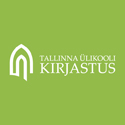Kriitiline diskursuseanalüüs tekstikeskses emakeeleõpetuses [Critical discourse analysis as a means of text-centred MTE]
Abstract
As mother tongue education has recently undergone significant methodical changes, it is important that educational literature corresponds with these changes. This work aims to present a methodical base for the Estonian compulsory upper-secondary level course “Media and influence”, and thus it studies how to combine contemporary principles of literacy with the analysis of media texts in a mother tongue education. The new didactic literature focuses on text analysis and examines the text in its social context. This work offers a new approach to the analysis of the media text, namely critical discourse analysis as a quickly developing field. The work examines the contemporary concepts of literacy, which methods of text analysis meet their requirements and what kind of texts should be used in upper-school lessons. First I discuss the basics of the new mother tongue curriculum, implemented in 2011, and then contemporary literacy concepts. Next I consider the principles of critical discourse analysis as a method of text analysis, proposing a range of texts to be used as educational materials and the ways of using critical discourse analysis of them in the “Media and infl uence” course. Text analysis observes how events are framed, and how phenomena, relations, roles and social identities are naturalized; it also discusses the strategies of argumentation. The analysis of the vocabulary, sentences and narratives of media texts makes it possible to describe the sociocultural customs of a society in a mother tongue education. The article includes examples from the textbook Media and influence by Aava and Salumäe (2013). In the discussion section, I describe how the goals of a mother tongue curriculum can be reached using critical discourse analysis and evaluate the strengths and weaknesses of critical literacy and critical discourse analysis in education. I use diff erent authors to theorize on how to fi ll the gaps between the textual realities of schools and students. The discussion also highlights other important issues that need att ention, e.g. how to combine the competence of visual literacy with linguistic competence.
Keywords
L1 curriculum, functional literacy, media text, critical literacy
Full Text:
PDFRefbacks
- There are currently no refbacks.
Published by / Kirjastaja:

ISSN 2504-6616 (print/trükis)
ISSN 2504-6624 (online/võrguväljaanne)
